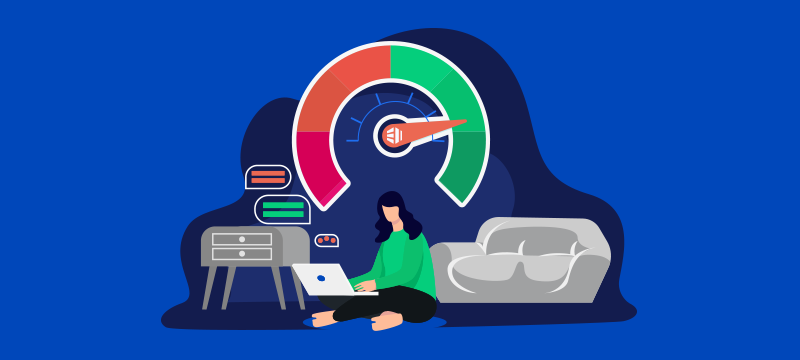eAccelerator is a free, open-source PHP accelerator and optimiser that can help speed up PHP code execution on web servers. It is designed to cache and optimize PHP scripts, reducing the time it takes for the server to process them. In this post, we will cover what eAccelerator is and give step-by-step instructions on how to install it on a web server.
What is eAccelerator?
eAccelerator is a PHP accelerator that improves the performance of PHP applications by caching the compiled PHP code in memory. When PHP scripts are requested, eAccelerator checks if the code is already in memory, and if it is, serves it directly from memory. This process eliminates the need to recompile the code each time a request is made, which can significantly improve the performance of PHP applications.
In addition to caching PHP code, eAccelerator also optimises PHP scripts by removing unnecessary code. This reduces the size of the code and optimises it for faster execution. eAccelerator can also compress the cached data to reduce the amount of memory it takes up. eAccelerator is compatible with many popular PHP applications and frameworks, including WordPress, Magento, Joomla, Drupal and more.
How to Install eAccelerator?
Before installing eAccelerator, ensure that your server meets the following requirements:
-
It is running PHP 5.2 or later
-
The following tools are installed: GCC compiler, GNU Make and Phpize
To install eAccelerator on your server, follow these steps:
- Download eAccelerator
You can download the latest version of eAccelerator from the official website: https://github.com/eaccelerator/eacceleratorOnce downloaded, extract the files to a temporary directory on your server.
- Compile eAccelerator
Navigate to the directory where you extracted eAccelerator and run the following commands:
phpize
./configure
make
make install
These commands will then compile eAccelerator with the PHP installation on your server.
- Configure eAccelerator
The next step is to create a new configuration file for eAccelerator in the conf.d directory of your PHP installation. For example, if you are using PHP 7.4, create a new file called eaccelerator.ini in the /etc/php/7.4/conf.d/ directory.
Once you have created the eaccelerator.ini configuration file, add the following lines of code to it:
extension=eaccelerator.so
eaccelerator.cache_dir=/tmp/eaccelerator
eaccelerator.enable=1
eaccelerator.optimizer=1
eaccelerator.check_mtime=1
eaccelerator.debug=0
eaccelerator.filter=
eaccelerator.shm_max=0
eaccelerator.shm_ttl=0
eaccelerator.shm_prune_period=0
eaccelerator.shm_only=0
eaccelerator.compress=1
eaccelerator.compress_level=9
Adding these lines will enable eAccelerator, set the cache directory to /tmp/eaccelerator, and enable the optimisation and compression of cached data. You can adjust these settings as needed.
- Restart PHP and Apache
To apply the changes made to the configuration file, you will need to restart PHP and Apache. You can do this with the following commands:
sudo systemctl restart php7.4-fpm
sudo systemctl restart apache2
Note: if you are not using PHP-FPM, replace php7.4-fpm with the name of the PHP module you are using.
Upon restart of PHP and Apache, eAccelerator should now be running.
How Web Hosting affects the Performance of PHP applications?
While eAccelerator can boost the performance of PHP applications, the type of web hosting solution you use can also have a significant impact on the speed at which your website and other applications perform.
All PHP applications require a web server with enough storage, CPU and RAM resources to process all their requests. During periods of high traffic or, in the case of shared hosting, when other websites on the server are busy, the performance of applications can be negatively affected. Similarly, PHP applications running on outdated hardware can still run slowly, even when tools like eAccelerator are installed.
To ensure your PHP applications have the levels of performance they need, you may need to consider upgrading to a different type of hosting solution, for example, moving from shared hosting to VPS or from VPS to a dedicated server or the cloud. At the same time, ensure that the hardware on which your PHP applications run offers the speed and reliability you need. Look for Intel Xeon processors and superfast SSD drives that can deliver high performance.
Conclusion
eAccelerator is a powerful PHP accelerator that can significantly improve the performance of PHP applications. It works by caching and optimizing PHP code to reduce the time it takes to process requests. Hopefully, after reading this post, you will understand what eAccelerator is, how it works and the steps you need to take to install it. In addition, you should also understand the importance of your hosting solution and what changes you may need to make to ensure high performance. If you require high-performance hosting based on the latest hardware technology, visit our homepage to discover our managed VPS Hosting , dedicated server and cloud solutions.



